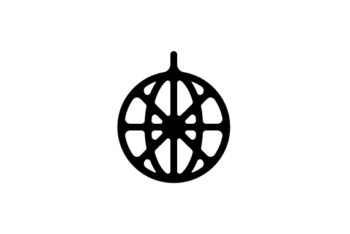
Oil, salt and wheat: the new personal brand of chef Ciccio Sultano
Olio, sale e grano, (“oil, salt and wheat”) is the name of the brand that represents Michelin starred chef Ciccio Sultano today.
Olio, sale e grano, (“oil, salt and wheat”) is the name of the brand that represents Michelin starred chef Ciccio Sultano today.
A journey that has come full circle considering the personal experiences that have been lived; the natural ebb and flow of evolution. This recognition provoked the undertaking to sketch the essence of each element that will comprise the philosophy that we intend.
“The essence is that on which I’ve based my professional experience – explains Sultano – I have dug through my memory in search of the elements that have given way to important scenarios. I’ve lived through a lot: a lot of dishes idealized and realized, techniques acquired, the peculiarity of repeating tastes of Sicilian tradition…gastronomic travels, sometimes transversal, which have always brought me back to the origins of a certain type of kitchen: essential, with a strong territorial connection – a connection to my land.
So it was in this way that I’ve always considered “oil, salt and wheat” a triad of great importance, because despite the infinite satisfactions of creativity and experimentation, in the end a kitchen without these three elements is a kitchen without sense.”
From way back when until today, symbols were considered sacred and spiritual, just as today they have come to represent peace and value.
Oil – we’re talking strictly extra virgin of Sicilian matrix – represents the fluidity of life.
Wheat is the essence of every beginning. In addition to being used as a unit of measurement, it was a commodity of exchange and payment in ancient civilizations and was even considered the mythological emblem of fertility.
Salt is the stabilizer of taste. But historically speaking, above all, it is one of the basic elements of guaranteed survival. Suffice it to say that in the Roman era, soldiers were paid with salt rations called salarium, from which the present meaning ‘salary’ can be interpreted: the pay that goes to each worker.
“If – continued the chef – we consider the elements separately we don’t have the idea of togetherness that, when consciously combined, they have the potential to create. Individually, according to my way of understanding ingredients, they have a dignity but not an essence.
Together, they help shape the idea of cooking that I interpret.
Therefore, I’ve deduced that my business philosophy must also reflect my actions at the stove, otherwise I would be a chef without a story to tell.
Simplicity gives elegance and provides content, reinforcing the idea of having an open, transparent, and engaging enterprise that is able to capture nuances and bear witness to a territory that, despite the immense history behind it, still has much to tell.”
Until we could bring to life everything the chef had imagined, it was necessary to create a brand that interpreted Sultano’s thoughts: an icon – a visual graphic – that could represent a kind of continuum in illustrating the growth process.
A logotype that would become key to a turning point in respect to what Ciccio Sultano had, up until this point, identified.
In order to ensure an authentic transpiring, the chef entrusted this personal reinterpretation to Carlo Scribano of the bespoke Copystudio.
Scribano had already created an initial corporate logo for the chef in the year 2000: it was an “m” extrapolated from the writing of restaurant “Duomo” in Ragusa Ibla.
“In that case – explained Carlo Scribano – the consonant was modified to recall the dome of the San Giorgio church in order to give an indicative, territorial reference to the place where Sultano operated. After about ten years, we have completely changed the graphic approach: it is no longer a logo attached to the location of the restaurant, but a deeply individual reference, a personal brand.”
“The approach – Scribano went on to say – is of a different nature; it is linked to a way of interpreting cooking and the ingredients so much so that it no longer references Ragusa Ibla or a baroque element. This is a logo that has an international breadth, without any geo-location.
The brand evokes elements that are indispensable for its cuisine, but that are also symbols of excellence in the Mediterranean tradition.
The final design is stylized, but was taken from hand-drawn sketches: the olive, the asterisk representing the crystallization of salt, and a single sprout of grain.
The three designs are superimposed together, becoming a unique symbol of three combined elements that live both individually and – perhaps most harmoniously – together. An insignia that, instead of deriving from noble or heraldic components, is created by simple, humble, and wildly vital elements.”
What was the root of inspiration in the name ‘Oil, salt and grain’?
“The logo – explained Carlo Scribano – comes from the proposal of the graphic studio to directly extract the elements characterizing the Ciccio Sultano brand, rather than engulf them in external creativity. The choice of these three symbols was derived from a long confrontation with Sultano himself, to try to identify something that strongly belonged to him. While places can be changed or abandoned – concludes the creator of Copystudio – his cuisine is and will always be marked by the quality of simple, basic ingredients of the Mediterranean.”
of Sabrina Gariddi

